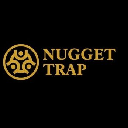-
 bitcoin
bitcoin $115692.075601 USD
5.13% -
 ethereum
ethereum $4162.931611 USD
11.68% -
 bnb
bnb $1310.063287 USD
17.56% -
 tether
tether $1.000983 USD
0.00% -
 xrp
xrp $2.534505 USD
8.16% -
 solana
solana $198.235737 USD
13.49% -
 usd-coin
usd-coin $1.000236 USD
0.02% -
 dogecoin
dogecoin $0.207352 USD
12.89% -
 tron
tron $0.323043 USD
3.62% -
 cardano
cardano $0.701559 USD
11.88% -
 hyperliquid
hyperliquid $39.924597 USD
8.30% -
 chainlink
chainlink $18.934457 USD
11.56% -
 ethena-usde
ethena-usde $1.000552 USD
0.02% -
 stellar
stellar $0.340575 USD
7.05% -
 bitcoin-cash
bitcoin-cash $545.011757 USD
8.86%
How to control risks in FLOW trading? How to set up stop-profit and stop-loss reasonably?
To manage risks in FLOW trading, use stop-loss and stop-profit orders, diversify your portfolio, and regularly adjust your strategy based on market conditions and technical analysis.
May 10, 2025 at 05:50 pm

Trading FLOW, the native cryptocurrency of the Flow blockchain, can be an exciting venture but also comes with inherent risks. To navigate the volatile crypto market effectively, it's essential to implement robust risk management strategies. This article will delve into how to control risks in FLOW trading and provide detailed guidance on setting up stop-profit and stop-loss orders reasonably.
Understanding Risk Management in FLOW Trading
Risk management is the cornerstone of successful trading, especially in the cryptocurrency market where price fluctuations can be extreme. When trading FLOW, it's crucial to assess your risk tolerance and set clear boundaries for potential losses. This involves understanding the market dynamics of FLOW, staying updated with the latest news affecting the Flow ecosystem, and using technical analysis to predict potential price movements.
To manage risks effectively, traders must diversify their portfolio, not over-leverage, and use tools like stop-loss and stop-profit orders. These tools help in automatically managing trades, reducing the emotional impact of trading decisions, and protecting gains while limiting losses.
Setting Up Stop-Loss Orders for FLOW
A stop-loss order is an essential tool for managing risk in FLOW trading. It automatically sells your FLOW tokens when the price reaches a certain level, preventing further losses. To set up a stop-loss order for FLOW, follow these steps:
Choose a Trading Platform: Select a reputable cryptocurrency exchange that supports FLOW trading and offers stop-loss functionality. Examples include Binance, Coinbase Pro, and Kraken.
Access Your Trading Account: Log into your account on the chosen platform.
Navigate to the FLOW Trading Pair: Find the trading pair involving FLOW (e.g., FLOW/USDT) on the platform.
Place the Stop-Loss Order:
- Click on the 'Orders' or 'Trade' section.
- Select 'Stop-Loss' from the order types.
- Enter the price at which you want the stop-loss to trigger. This should be based on your risk tolerance and market analysis.
- Specify the amount of FLOW you want the order to cover.
- Review and confirm the order.
Monitor and Adjust: Regularly review your stop-loss orders to ensure they align with current market conditions and your trading strategy.
Setting Up Stop-Profit Orders for FLOW
Stop-profit orders, also known as take-profit orders, are used to lock in profits when the price of FLOW reaches a predetermined level. Setting up a stop-profit order involves similar steps to setting up a stop-loss order:
Choose a Trading Platform: Ensure your chosen platform supports stop-profit orders.
Access Your Trading Account: Log in to your account.
Navigate to the FLOW Trading Pair: Go to the trading pair you are interested in.
Place the Stop-Profit Order:
- Click on the 'Orders' or 'Trade' section.
- Select 'Stop-Profit' or 'Take-Profit' from the order types.
- Enter the price at which you want the stop-profit to trigger. This should be based on your profit targets and market analysis.
- Specify the amount of FLOW you want the order to cover.
- Review and confirm the order.
Monitor and Adjust: Keep an eye on your stop-profit orders and adjust them as necessary to reflect changes in the market or your trading goals.
Determining Reasonable Stop-Loss and Stop-Profit Levels
Setting reasonable levels for stop-loss and stop-profit orders is crucial for effective risk management. Here are some tips to help you determine these levels:
Technical Analysis: Use technical indicators like moving averages, support and resistance levels, and trend lines to identify potential price points for stop-loss and stop-profit orders. For example, setting a stop-loss just below a significant support level can help minimize losses during a downturn.
Volatility Assessment: Consider the historical volatility of FLOW. More volatile assets might require wider stop-loss margins to avoid being triggered by normal price fluctuations.
Risk-Reward Ratio: Aim for a favorable risk-reward ratio. A common ratio is 1:2, meaning you are willing to risk $1 to potentially gain $2. Calculate your stop-loss and stop-profit levels accordingly.
Market Sentiment: Stay informed about the overall market sentiment and news that could impact FLOW's price. Adjust your stop-loss and stop-profit levels based on this information.
Implementing a Risk Management Plan
A comprehensive risk management plan is vital for trading FLOW successfully. Here are key components to include in your plan:
Position Sizing: Determine the size of your FLOW positions based on your total trading capital and risk tolerance. A common rule is not to risk more than 1-2% of your capital on a single trade.
Diversification: Spread your investments across different cryptocurrencies and assets to reduce the impact of a single asset's poor performance.
Regular Review: Continuously monitor and review your trading performance and risk management strategies. Adjust your approach as needed based on your results and changing market conditions.
Emotional Discipline: Stick to your trading plan and avoid making impulsive decisions based on emotions. Use stop-loss and stop-profit orders to automate your trading decisions and reduce emotional trading.
Using Advanced Risk Management Tools
In addition to stop-loss and stop-profit orders, there are other advanced tools and strategies you can use to manage risks in FLOW trading:
Trailing Stop Orders: A trailing stop order adjusts the stop price at a fixed percentage or dollar amount below the market price. This allows you to lock in profits as the price of FLOW increases while still protecting against significant downturns.
Hedging: Use other cryptocurrencies or financial instruments to hedge your FLOW positions. For example, if you hold a long position in FLOW, you might take a short position in a correlated asset to mitigate potential losses.
Options and Futures: If available on your trading platform, consider using options and futures contracts to manage risk. These derivatives can provide additional flexibility in managing your FLOW exposure.
Frequently Asked Questions
Q: Can I use stop-loss and stop-profit orders on all cryptocurrency exchanges?A: Not all cryptocurrency exchanges support stop-loss and stop-profit orders. It's essential to check the features of your chosen platform before trading. Popular exchanges like Binance, Coinbase Pro, and Kraken typically offer these tools.
Q: How often should I adjust my stop-loss and stop-profit orders?A: The frequency of adjusting your stop-loss and stop-profit orders depends on market volatility and your trading strategy. In highly volatile markets, you might need to adjust them more frequently to reflect rapid price changes. Regularly review your orders to ensure they align with your current market analysis and risk management plan.
Q: What should I do if my stop-loss order is triggered?A: If your stop-loss order is triggered, it means your FLOW position has been sold at the predetermined price to limit your losses. Review the reasons behind the price drop, reassess your market analysis, and consider whether to re-enter the market at a more favorable price or adjust your trading strategy.
Q: Is it possible to set up stop-loss and stop-profit orders on mobile trading apps?A: Yes, many cryptocurrency exchanges offer mobile apps that allow you to set up stop-loss and stop-profit orders. Ensure that the app you are using supports these features and follow the same steps as you would on the desktop version of the platform.
Disclaimer:info@kdj.com
The information provided is not trading advice. kdj.com does not assume any responsibility for any investments made based on the information provided in this article. Cryptocurrencies are highly volatile and it is highly recommended that you invest with caution after thorough research!
If you believe that the content used on this website infringes your copyright, please contact us immediately (info@kdj.com) and we will delete it promptly.
- XRP Price Prediction: Weekend Rollercoaster or Rally?
- 2025-10-12 08:45:16
- Bittensor (TAO): Super Bullish Signals Point to Potential 2x Rally
- 2025-10-11 10:25:12
- Silver Price Correction: Navigating the Dip & Identifying Key SEO Keywords
- 2025-10-11 10:25:12
- Decoding Crypto Trends: Bittensor's Bull Run, Cardano's Dip, and LivLive's Presale Buzz in 'Uptober 2025'
- 2025-10-12 08:45:16
- MoonBull: The Crypto Meme Coin Promising 1000x Gains?
- 2025-10-11 10:30:01
- Crypto Payroll Revolution: Stablecoins, Altcoins, and the Future of Salary Payments
- 2025-10-11 10:30:01
Related knowledge

Practical parameter settings for a Bitcoin multi-timeframe moving average system
Sep 18,2025 at 10:54pm
Optimizing Timeframe Combinations for Bitcoin Trading1. Selecting appropriate timeframes is crucial when building a multi-timeframe moving average sys...

How can I filter out false breakouts in Dogecoin high-frequency trading?
Sep 22,2025 at 01:00am
Understanding False Breakouts in Dogecoin Trading1. A false breakout occurs when Dogecoin's price appears to move beyond a defined support or resistan...

Techniques for identifying tops and bottoms in the Bitcoin on-chain NVT model
Sep 20,2025 at 07:54pm
Understanding the NVT Model in Bitcoin Analysis1. The Network Value to Transactions (NVT) ratio is often described as the 'P/E ratio' of the cryptocur...

What does the surge in open interest in Bitcoincoin futures mean?
Sep 20,2025 at 11:18pm
Understanding the Surge in Dogecoin Futures Open Interest1. A surge in open interest within Dogecoin futures indicates a growing number of active cont...

How can I use the Ethereum USDT premium to gauge market sentiment?
Sep 18,2025 at 11:55pm
Understanding the Ethereum USDT Premium1. The Ethereum USDT premium refers to the price difference between USDT (Tether) traded on Ethereum-based plat...

What should I do if Ethereum staking yields decline?
Sep 20,2025 at 06:18am
Understanding the Causes Behind Declining Ethereum Staking Yields1. The Ethereum network transitioned to a proof-of-stake consensus mechanism with the...

Practical parameter settings for a Bitcoin multi-timeframe moving average system
Sep 18,2025 at 10:54pm
Optimizing Timeframe Combinations for Bitcoin Trading1. Selecting appropriate timeframes is crucial when building a multi-timeframe moving average sys...

How can I filter out false breakouts in Dogecoin high-frequency trading?
Sep 22,2025 at 01:00am
Understanding False Breakouts in Dogecoin Trading1. A false breakout occurs when Dogecoin's price appears to move beyond a defined support or resistan...

Techniques for identifying tops and bottoms in the Bitcoin on-chain NVT model
Sep 20,2025 at 07:54pm
Understanding the NVT Model in Bitcoin Analysis1. The Network Value to Transactions (NVT) ratio is often described as the 'P/E ratio' of the cryptocur...

What does the surge in open interest in Bitcoincoin futures mean?
Sep 20,2025 at 11:18pm
Understanding the Surge in Dogecoin Futures Open Interest1. A surge in open interest within Dogecoin futures indicates a growing number of active cont...

How can I use the Ethereum USDT premium to gauge market sentiment?
Sep 18,2025 at 11:55pm
Understanding the Ethereum USDT Premium1. The Ethereum USDT premium refers to the price difference between USDT (Tether) traded on Ethereum-based plat...

What should I do if Ethereum staking yields decline?
Sep 20,2025 at 06:18am
Understanding the Causes Behind Declining Ethereum Staking Yields1. The Ethereum network transitioned to a proof-of-stake consensus mechanism with the...
See all articles










































































